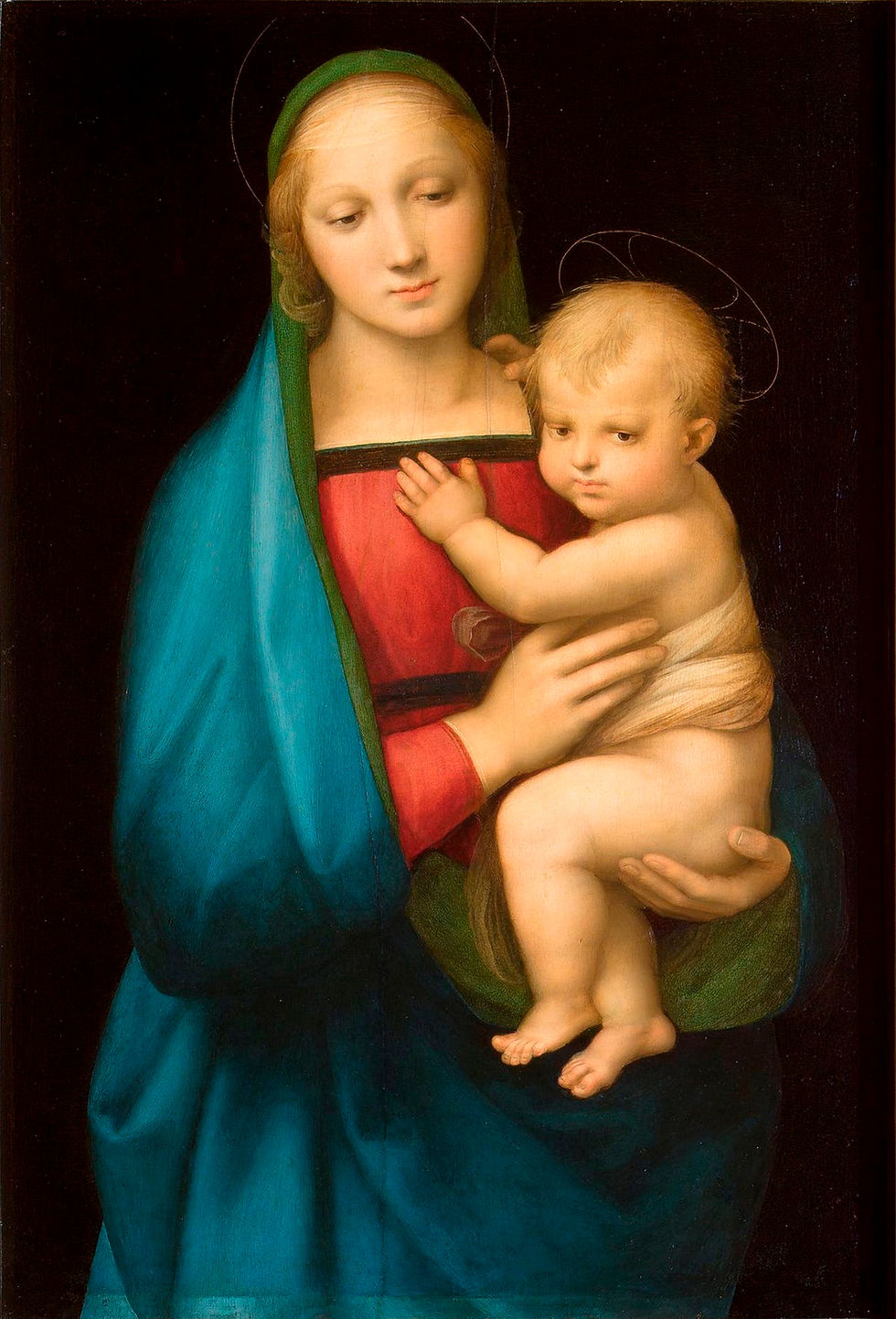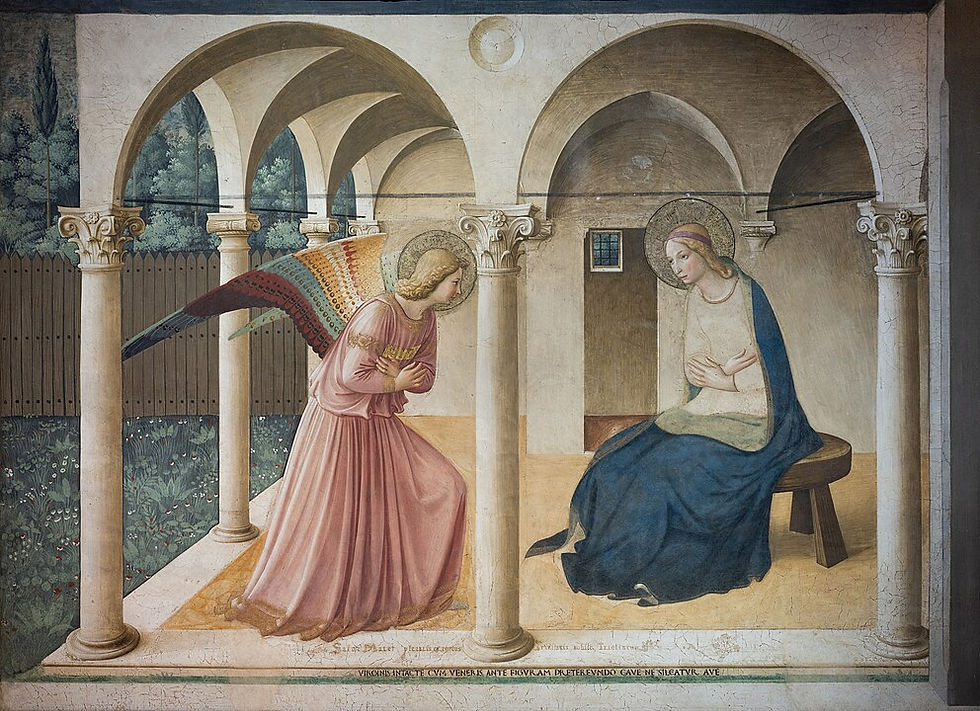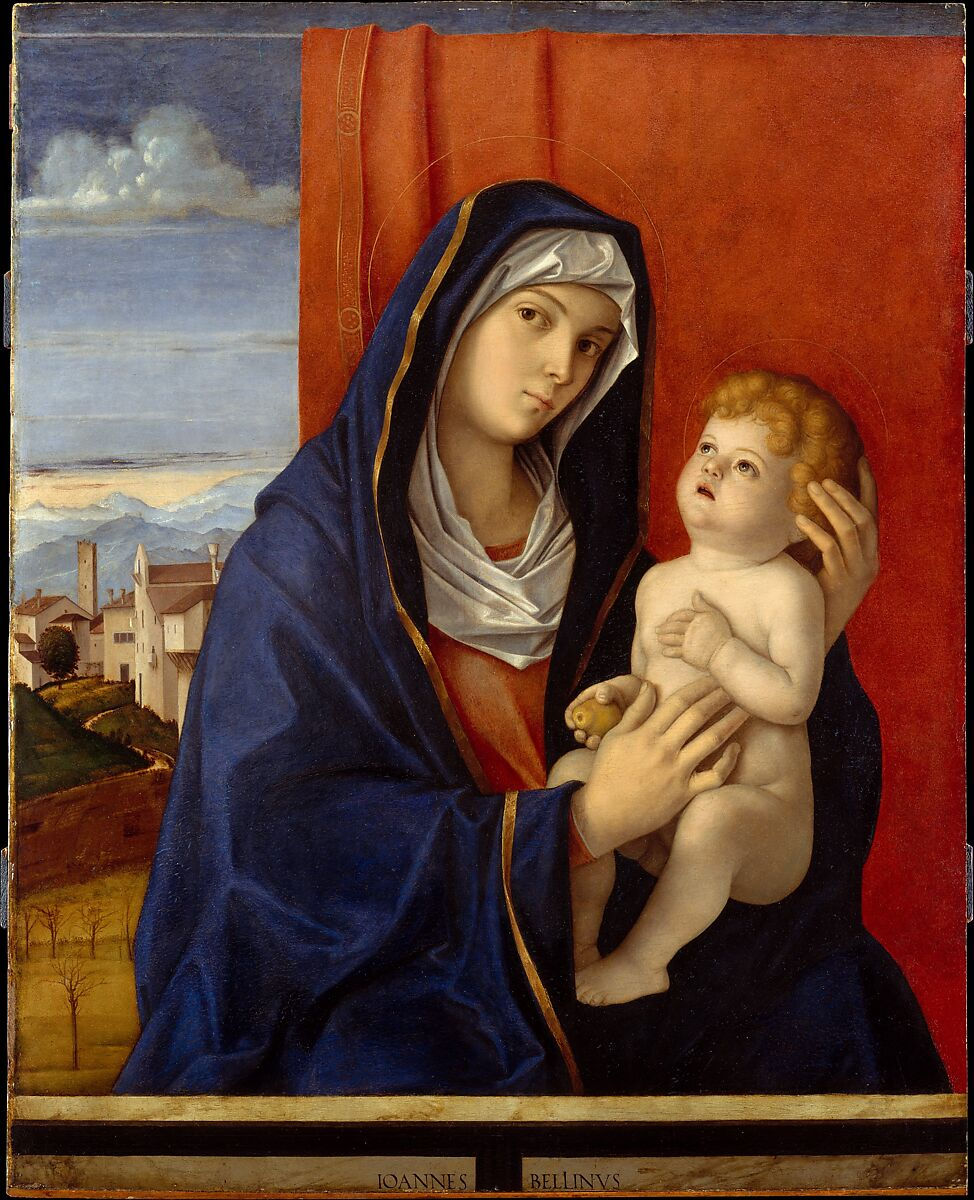Dorothea as Madonna: How George Eliot Paints Character with Italian Masters
- Kirk Barbera

- Sep 7
- 7 min read
When we first meet Dorothea Brooke in Middlemarch, George Eliot frames her like a figure from a Renaissance painting. It’s tempting to take that image as a final judgment—she is a Madonna, pure and austere, set apart from ordinary life. But Eliot is only beginning to sketch her heroine, and if we settle too quickly on this first impression, we risk missing the complexity that unfolds. Middlemarch warns us from the start: judging by appearances alone is always to our detriment.
When George Eliot opens Middlemarch, she does something at once subtle and audacious. She does not tell us immediately what Dorothea Brooke thinks, or what her neighbors think of her. Instead, she frames her heroine as if she were already a figure in a painting. In the very first chapter, Eliot writes:
“Miss Brooke had that kind of beauty which seems to be thrown into relief by poor dress. Her hand and wrist were so finely formed that she could wear sleeves not less bare of style than those in which the Blessed Virgin appeared to Italian painters; and her profile as well as her stature and bearing seemed to gain the more dignity from her plain garments, which by the side of provincial fashion gave her the impressiveness of a fine quotation from the Bible,—or from one of our elder poets,—in a paragraph of to-day’s newspaper.”

The line is famous for good reason. In a single sweep, Eliot provides us with a vivid portrait of Dorothea’s physical presence and at the same time places her in a gallery of sacred images. Dorothea is not dressed in jewels or lace. She is not a worldly beauty of the kind you might find at a provincial ball. Her beauty is compared instead to the Madonnas painted by the Italian Renaissance masters—figures whose dignity depends not on fashionable decoration but on their spiritual gravity and their unadorned, timeless simplicity.
But for many readers today, the comparison is easy to miss. Few of us spend our days surrounded by Raphael’s Madonnas or Fra Angelico’s frescoes. To really feel the weight of Eliot’s imagery, we need to pause and recall who these painters were, and what those Madonnas actually looked like.

The Italian Painters Eliot Had in Mind
When Eliot’s 19th-century readers came across the phrase “the Blessed Virgin as she appeared to Italian painters,” they would have immediately pictured a type. During the Renaissance, roughly the 15th and 16th centuries, painters in Italy returned again and again to the Virgin Mary as one of their most important subjects. They sought to portray her as both human and divine: tender mother, humble servant of God, and queen of heaven.
These Madonnas were not elaborate fashion plates. Quite the opposite. Mary is usually shown in plain robes, with long sleeves and simple colors. The two most common hues are red and blue—the red of love and sacrifice, the blue of purity and heaven. In these paintings, she is not ornamented with jewelry or adorned with lace. Her garments are “bare of style,” in Eliot’s phrase, meaning that they lack the decorative flourish of contemporary court dress. Yet the very absence of fashion gives her a deeper presence. She radiates spiritual seriousness.
The names of the painters matter, because each brings a slightly different shade of meaning. Fra Angelico, a Dominican friar of the early 1400s, painted Madonnas with delicate faces and luminous expressions, often set against gilded backgrounds. His Mary is a figure of prayerful serenity. Giovanni Bellini, working in Venice, emphasized maternal warmth, giving his Madonnas soft, approachable features, often set against broad landscapes. Pietro Perugino, Raphael’s teacher, gave his Virgins a kind of ideal calm, their bodies graceful and perfectly proportioned. And then there is Raphael himself, the supreme painter of Madonnas, whose images—Madonna del Granduca, Madonna of the Meadow, Sistine Madonna—have become iconic. His Mary is simple, radiant, youthful, with little adornment but with an almost superhuman harmony of form.
These were the images in the cultural bloodstream of Eliot’s time. Even readers who had not seen the originals in Florence or Dresden would have known reproductions, engravings, and descriptions. To say Dorothea is like a Madonna of the Italian masters is to conjure a specific visual language: plainness elevated into sacred dignity, simplicity transfigured into something monumental.

Dorothea’s Beauty as Sacred Plainness
The passage tells us that Dorothea’s beauty is “thrown into relief by poor dress.” That is, her plain clothing does not conceal her beauty but emphasizes it, much as the Virgin’s humble sleeves in Italian art highlight her sanctity. Eliot even narrows in on Dorothea’s hands and wrists, those finely formed details that could be set within the most unadorned garments and still shine. The suggestion is clear: Dorothea is a woman whose presence cannot be measured by the standards of local fashion. She does not need the frills of provincial society to impress. Her dignity comes from something inner, something spiritual.
Eliot then presses the point further. Dorothea’s plain garments, set against the fuss of her neighbors’ clothes, give her the “impressiveness of a fine quotation from the Bible—or from one of our elder poets—in a paragraph of today’s newspaper.” This is a dazzling metaphor. Imagine turning the page of your local paper and suddenly stumbling upon a verse from Isaiah or a line from Milton. It would be jarring, out of place, but also impressive—lifting the mundane into a higher register. That is what Dorothea is like in her community. She is a Madonna in a provincial town, a sacred presence amid ordinary lives.

Why Eliot Uses the Language of Painting
Why does Eliot do this? Why introduce Dorothea through the imagery of Renaissance painting? Part of the answer is that Eliot wants to elevate her heroine. Dorothea is not a mere country girl with pretty looks. She is marked from the start as someone whose inner life will be serious, intense, and morally charged. Comparing her to a Madonna is a way of signaling to the reader: pay attention, this is no ordinary heroine.
But Eliot also knows that the image of the Madonna carries a certain ambiguity. The Madonna is venerated, but also idealized. She is seen, admired, and worshiped, but not necessarily understood as an individual. Eliot’s readers would recognize that this kind of beauty can be both powerful and isolating. It sets Dorothea apart, but it also makes it difficult for others to see her as she really is. She will be admired for her purity, her seriousness, her lofty aspirations, but she may not be loved for her human complexity.
In this sense, the Madonna imagery foreshadows Dorothea’s fate. She marries Casaubon, a man who sees her as a kind of devotional figure, a helpmate to his scholarly mission, not as a partner in her own right. Others will project ideals onto her, just as viewers project meaning onto a painting. The very comparison that elevates her also hints at the misunderstandings and disappointments that will shape her life.

How This Shapes Our Reading of the Novel
If we pay attention to these early cues, we can see what Eliot is doing in Middlemarch. She is teaching us to read her characters not just as individuals but as figures set against cultural backdrops. Dorothea is not described in isolation. She is framed through art history, through visual traditions that her readers would have recognized instantly. Eliot assumes a kind of shared cultural vocabulary: when I say “Madonna,” you will know what I mean.
For us today, that vocabulary is less familiar. We need to pause, look at Raphael’s Madonna del Granduca, and imagine how its plain sleeves and serene dignity would have resonated with Eliot’s readers. We need to recall that to be compared to a Madonna was to be lifted out of the everyday and set among the sacred. Once we make that leap, Dorothea’s introduction opens up. We see her as a young woman whose plainness is not drab but luminous, whose seriousness is not gloomy but commanding, whose presence is like scripture interrupting the chatter of daily news.
And we also sense the tension. Because to be cast as a Madonna is to be placed on a pedestal, and pedestals are lonely places. The very comparison that magnifies Dorothea also foreshadows the misunderstanding at the heart of her life. She will be revered, but will she be known?
Eliot’s genius lies in her ability to compress all this into a single paragraph. By invoking the Madonnas of Italian painters, she gives us a visual shorthand for Dorothea’s character: plain, dignified, spiritually serious. By likening her to a biblical quotation dropped into a newspaper, she suggests how startling such a figure can be in ordinary society. And by choosing imagery that both elevates and idealizes, Eliot sets the stage for the struggles to come.
This is what Middlemarch offers its attentive readers. If we notice the details—if we pause to ask what it means to be “bare of style” like the Virgin Mary in Italian art—we begin to see how Eliot uses culture, history, and imagery to deepen her characterizations. Dorothea is not just a heroine. She is a Madonna for the modern world, a sacred figure dropped into the midst of provincial England. And the novel asks us to watch what happens when such a figure tries to live, love, and be understood among ordinary human beings.
Dorothea’s entrance, then, is not the end of her portrait but the first brushstroke. To see her only as a Madonna is to fall into the very trap Eliot warns against: judging by appearances and mistaking a symbol for a soul. Eliot invites us to admire the dignity of Dorothea’s plainness, but she also hints that such elevation comes at a cost. The young woman we glimpse in this opening chapter is destined to move beyond the frame of sacred comparison and into the messy, often painful reality of human striving.
This is only the beginning of Dorothea’s story. The Madonna-like image prepares us to expect grandeur and purity, but Middlemarch will complicate those expectations at every turn. If we follow closely, Eliot will show us how a life that seems saintly on the surface is also filled with contradiction, yearning, and vulnerability. To read attentively is to resist easy judgments, to let Dorothea grow in our eyes as she grows in her world. That is the reward Eliot offers: not the comfort of a fixed icon, but the unfolding depth of a living character.



Comments